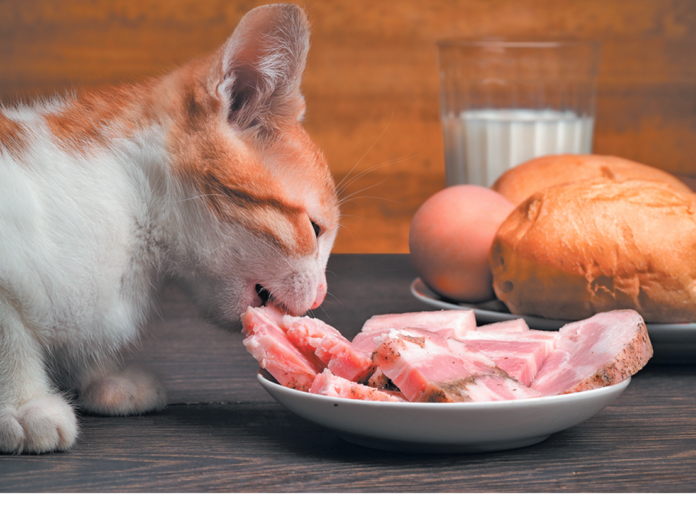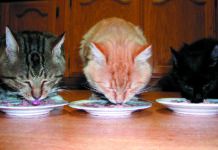Health most definitely can be affected by a cat’s diet — in very important ways. For instance, the veterinary nutritionists at the Tufts Cummings Clinical Nutrition Service have seen:
-Cats with thiamine deficiencies severe enough to cause neurological signs including difficulty walking, seizures, or coma.
-Cats with calcium deficiencies severe enough to cause bone fractures or seizures.
-Cats with nutrient deficiencies — or toxicities — caused by feeding them diets not designed to contain all essential nutrients or lacking in quality control.
-Cats whose health conditions (for instance, kidney disease) were made worse with foods that contained ingredients or nutrient levels that exacerbate those illnesses.
Complicating the issue is that when people provide their veterinarian with their cat’s dietary history, they often leave out important details, which makes it harder to get to the root of the problem. Treats fed on the side, people food, and specific information about commercial pet food (saying “it’s organic” or “chicken canned food” rather than giving the exact brand) often get left out.
There are seven pieces of dietary information you need to provide:
1|Not just the brand but also the individual product and flavor. Ingredients and nutrient levels can differ dramatically even between flavors from the same line. For example, one popular canned cat food brand varies from around 60 to 120 calories per 2.5-oz can. You should provide enough information to allow your vet to be able to look up the nutrients in the exact food you’re feeding your cat, if needed. Copy the full name from the label, or take a photo and bring that with you to the appointment.
2|The exact recipe of a homemade diet. Most people buy their cat’s meals in bags or cans but if you do make them in your kitchen, you have to give the specifics of the recipe in the same detail the veterinarian would need to prepare the food herself in her own kitchen.
3|Treats. Treats can sometimes end up comprising a large percentage of a cat’s total calories. As with the diet itself, the veterinarian will require not only the brand and amount but also the specific product and flavor.
4|Table food. This one is a bit tricky because the exact foods and the amounts will differ from day to day. As best as possible, write down all the different people food you give your cat and note how much you give and how often.
5|Dental Products. You might give your cat dental treats to help clean her teeth, but these products — including pet toothpaste, which cats swallow — should be included when tallying what your pet eats each day.
6|Dietary supplements. Supplements, which most cats don’t need on top of a high-quality diet, can cause nutrition issues because they are not regulated by the federal government. That is, their quality cannot always be guaranteed. Or they can be given at doses that lead to serious nutrient imbalances. Giving a cat multiple supplements can cause some nutrients to build to toxic levels in her body. And although it’s uncommon, some supplements can cause health problems rather than prevent them.
Does your cat take medicine in store-bought pill pockets, which are edible treats? Cats who take a pill on a consistent basis and are administered those pills with food are getting calories and other nutrients every day that need to be accounted for. If a cat is supposed to be on a low-sodium diet because of heart disease or kidney failure and you administer her medicine in a food with a high sodium content, you could be negating, or at least lessening, the effects of the diet.
An easy way to collect all this information for your cat’s next veterinary visit is to fill out the World Small Animal Veterinary Association’s diet history form. It will put all the details in one place. Go to wsava.org, click on the “Global Guidelines” tab and then on the “Global Nutrition Guidelines” sub-tab. Scroll down for the “Diet History Form.” Download a copy, fill it in, and email it to your vet before the appointment. She can add it to your cat’s medical record.




